Translated by | GaryMa Wu Blockchain
Original Link:
https://x.com/PineAnalytics/status/1914301091337953734
Abstract
This report investigates a prevalent and highly coordinated meme token farming mode on Solana: token deployers transfer SOL to "sniper wallets", enabling these wallets to buy the token within the same block as its launch. By focusing on a clear, provable fund flow between deployers and snipers, we identified a group of high-confidence extraction behaviors.
Our analysis shows that this strategy is neither a sporadic occurrence nor a marginal behavior - in just the past month, over 15,000 SOL in realized profits were extracted from more than 15,000 token launches, involving over 4,600 sniper wallets and 10,400 deployers. These wallets exhibited an abnormally high success rate (87% of snipers profitable), clean exit strategies, and structured operational patterns.
[The rest of the translation follows the same professional and precise approach, maintaining the original structure and technical terminology.]In the remainder of this article, we will only study sniper wallets that directly obtain funding from deployers before launch and snipe in the same block. The reasons are as follows: they contribute significant profits; have the least obfuscation methods; represent the most operationally viable malicious subset; researching them can provide the clearest heuristic framework for detecting and mitigating more advanced extraction strategies.
Findings
Focusing on the subset of "same-block sniping + direct funding chain", we reveal a widespread, structured, and highly profitable on-chain collaborative behavior. All data below covers from March 15th to date:

1. Same-block sniping funded by deployers is common and systematic
a. Confirmed 15,000+ tokens were sniped by directly funded wallets in the launch block over the past month;
b. Involving 4,600+ sniper wallets and 10,400+ deployers;
c. Representing approximately 1.75% of pump.fun's issuance.
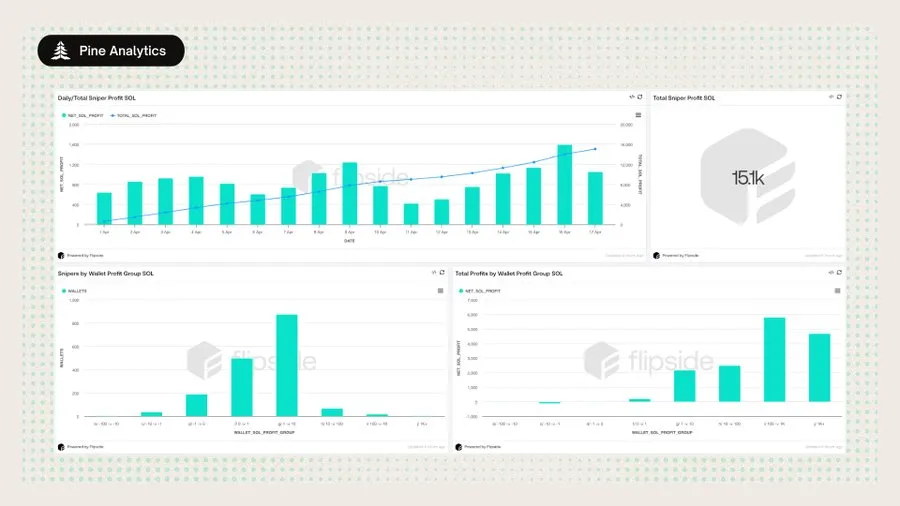
2. This behavior is highly profitable
a. Directly funded sniper wallets have realized net profits > 15,000 SOL;
b. Sniper success rate of 87%, with very few failed transactions;
c. Typical wallet earnings of 1–100 SOL, with some exceeding 500 SOL.
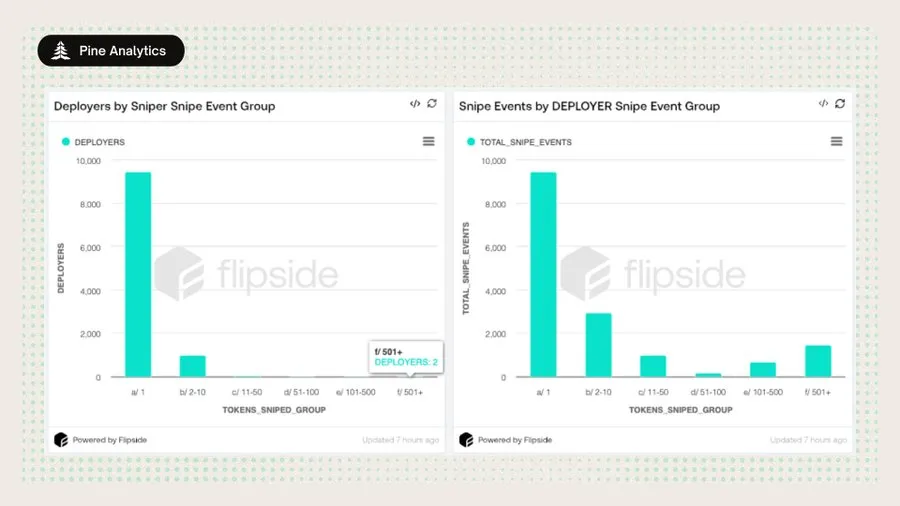
3. Repeated deployments and sniping point to farming networks
a. Many deployers use new wallets to batch create dozens to hundreds of tokens;
b. Some sniper wallets execute hundreds of sniping in a single day;
c. Observed a "center-radial" structure: one wallet funds multiple sniper wallets, all sniping the same token.
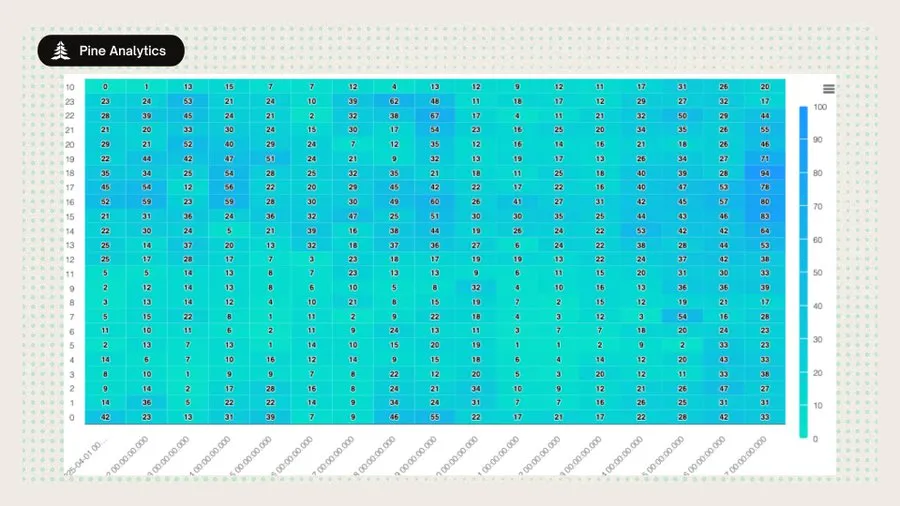
4. Sniping shows a human-centric time pattern
a. Peak activity between UTC 14:00–23:00; almost stagnant between UTC 00:00–08:00;
b. Aligns with US working hours, indicating manual/cron-triggered timing, rather than fully automated 24/7.
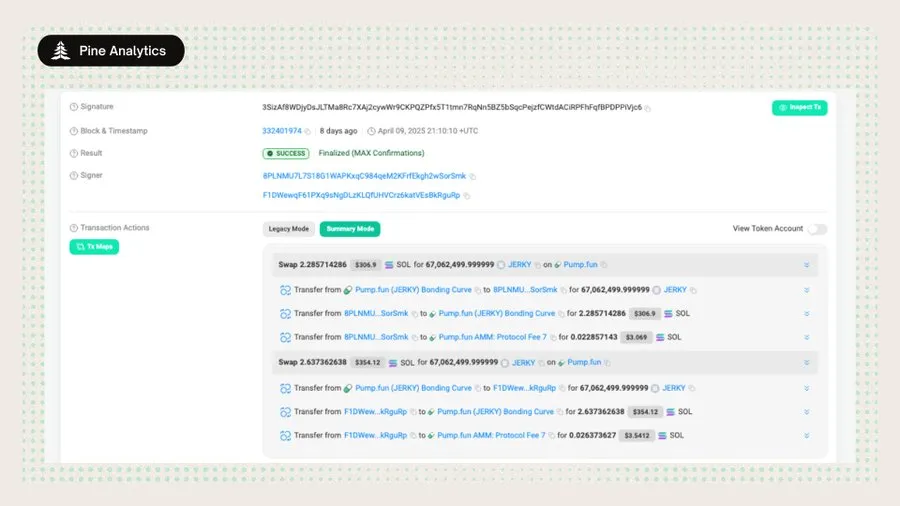
5. One-time wallets and multi-sig transactions obscure ownership
a. Deployers simultaneously fund multiple wallets and sign sniping in the same transaction;
b. These burn wallets never sign any subsequent transactions;
c. Deployers split initial purchases across 2–4 wallets to disguise genuine demand.
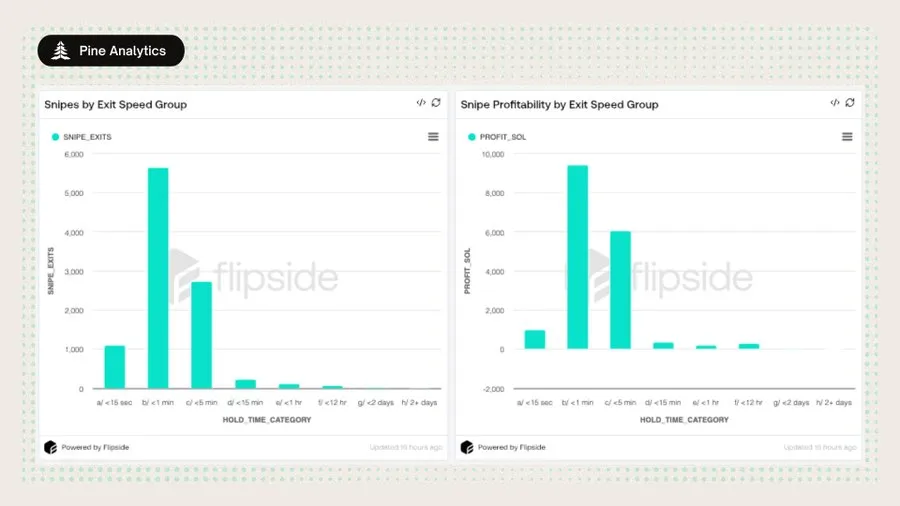
Exit Behavior
To deeply understand how these wallets exit, we break down the data across two behavioral dimensions:
1. Exit Timing — from first purchase to final sale;
2. Swap Count — number of independent selling transactions used for exit.
Data Conclusions
1. Exit Speed
a. 55% of snipers sell out completely within 1 minute;
b. 85% liquidate within 5 minutes;
c. 11% complete within 15 seconds.
2. Selling Transactions
a. Over 90% of sniper wallets exit using only 1–2 sell orders;
b. Rarely use progressive selling.
3. Profitability Trend
a. Most profitable are wallets exiting < 1 minute, followed by < 5 minutes;
b. Longer holding or multiple sales have slightly higher average profit per instance, but are extremely few and contribute minimally to total profits.
Explanation
These patterns indicate that deployer-funded sniping is not a trading behavior, but an automated, low-risk extraction strategy:
· Front-run buying → Quick selling → Complete exit.
· Single sale represents complete disregard for price fluctuations, only exploiting the initial advantage to dump.
· Few more complex exit strategies are just exceptions, not the mainstream mode.
Actionable Insights
The following recommendations aim to help protocol teams, frontend developers, and researchers identify and address extractive or collaborative token issuance patterns by converting observed behaviors into heuristics, filters, and warnings to increase user transparency and reduce risks.
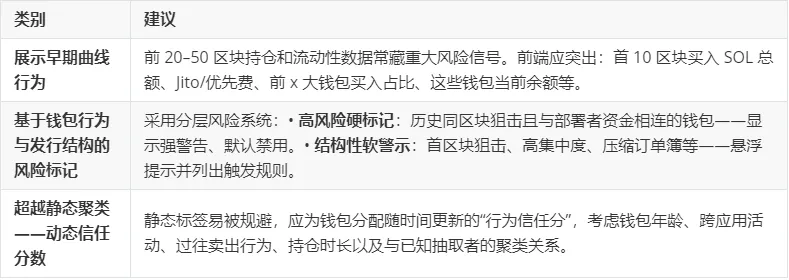
Conclusion
This report reveals a continuous, structured, and highly profitable Solana token issuance extraction strategy: deployer-funded same-block sniping. By tracking direct SOL transfers from deployers to sniper wallets, we identified an insider-style behavior leveraging Solana's high-throughput architecture for collaborative extraction.
Although this method only captures part of the same-block sniping, its scale and patterns indicate this is not sporadic speculation, but an operation with privileged positioning, a repeatable system, and clear intent. The significance of this strategy is manifested in:
1. Distorting early market signals, making tokens appear more attractive or competitive;
2. Endangering retail investors — who unknowingly become exit liquidity;
3. Undermining trust in open token issuance, especially on platforms like pump.fun that prioritize speed and ease of use.
Mitigating this issue requires more than passive defense, including better heuristics, frontend warnings, protocol-level guardrails, and continuous efforts to map and monitor collaborative behaviors. Detection tools exist — the question is whether the ecosystem is willing to truly apply them.
This report takes the first step: providing a reliable, reproducible filter to identify the most obvious collaborative behaviors. But this is just the beginning. The real challenge lies in detecting highly obfuscated, continuously evolving strategies and building a chain culture that rewards transparency rather than extraction.






